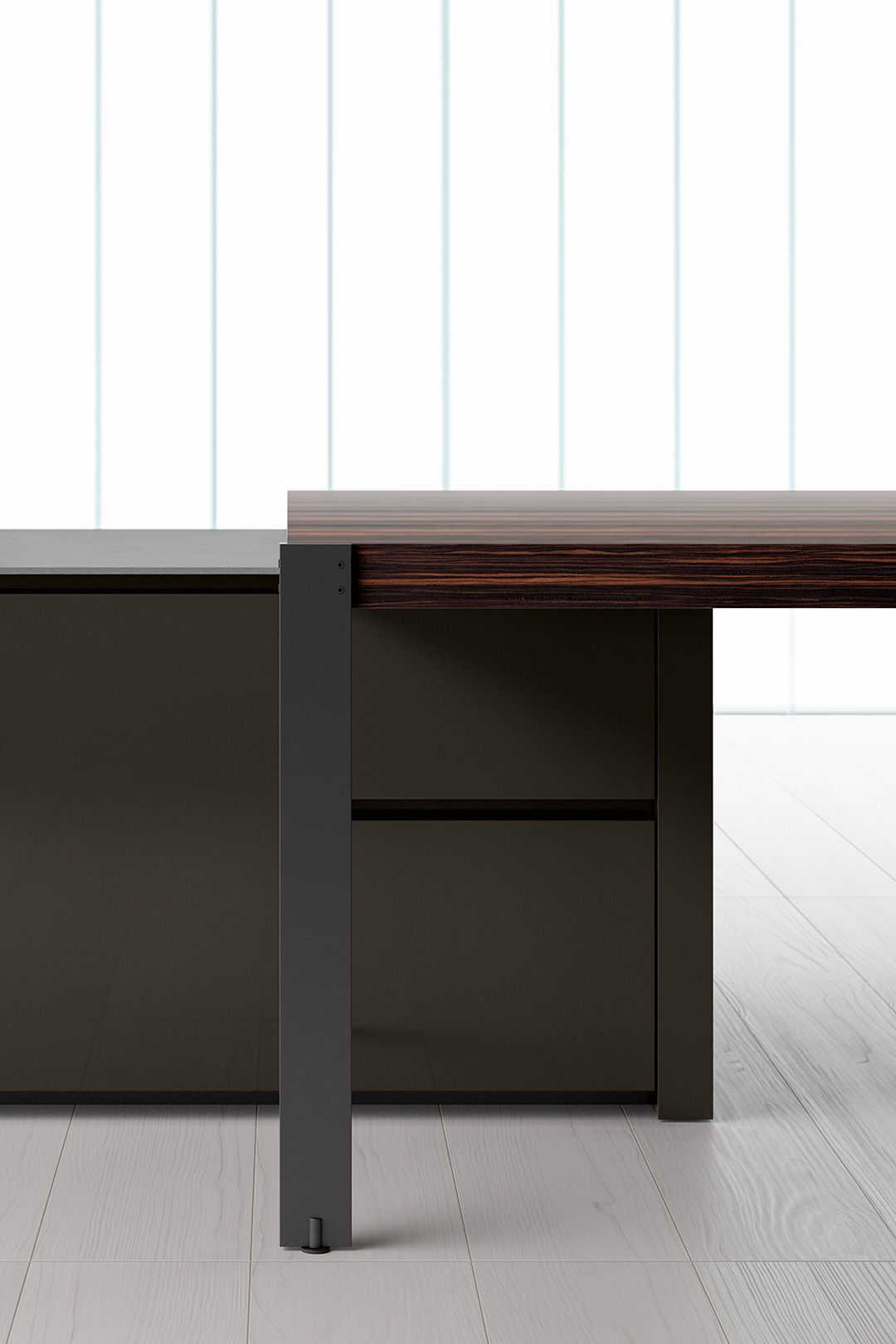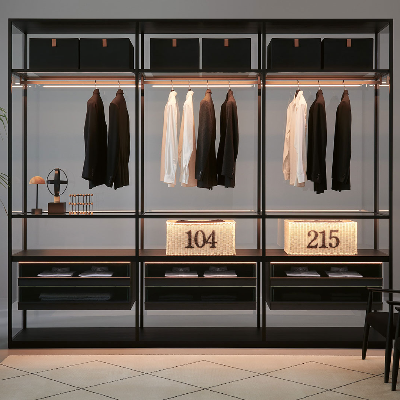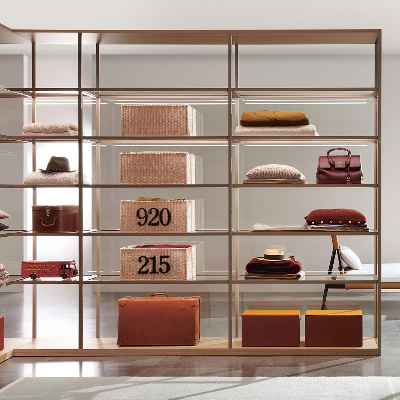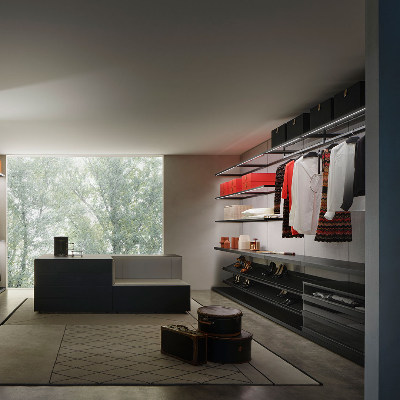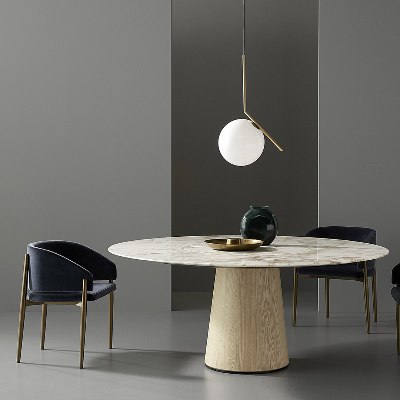At the heart of Boffi’s approach to design and manufacturing is a word that, appropriately, contains more than one meaning. In English, becoming can be a philosophical concept, owing a debt to Heraclitus — who never stepped in the same river twice — and denoting the “state of becoming,” a progressive, trial and error process of change, failure, and success. Samuel Beckett’s mantra was “try again, fail again, fail better.” In each iteration of becoming, Boffi and Lissoni have worked together to refine and perfect.
Secondarily, becoming also means something attractive, flattering, and ideally suited to the person who owns or uses it. That process of “becoming”, led to Case 5.0 — eminently usable and perfectly matched with the desires of those who cook and socialize in and with it.
When Piero Lissoni designed Case 5.0 in 2002, he made a point of presenting it to the public at the Caproni industrial shed outside Milan. Here a long-forgotten master designer and aviation pioneer named Gianni Caproni had produced generations of aeroplanes — classics in terms of performance and design. This was an unusual way to announce a new approach to kitchens, but it was ahead of its time, like everything that bears the Boffi and Lissoni names.
The twenty years between the original introduction of Case 5.0 and the new iteration of Case 5.0 have been a time of technological and design advances, but also a time in which Boffi and Lissoni have studied and listened to the consumer.
The 5 cm thickness of the Case 5.0 cabinet doors — enclosing the natural walnut wood drawers — incorporates an 8 mm section that frames it, becoming its handle. The thickness and mass of the doors endow them with a special tactile sense of solidity. The handle strips with the same finish as the base cabinets reinforce the units’ continuity. The cabinets feature pull-out doors, not hinged, and 9 cm side support panels. The countertop is relatively thin — 1.2 to 2 cm. — establishing a contrast with the much thicker cabinet doors. This year, new features are being introduced: cantilevered kitchen peninsulas extending up to 180 cm. and new materials for doors and countertops such as MDi by Inalco with new and exclusive colours, Lost Woods – Indian rosewood, Datuk ebony and teak and such absolute novelties — selected by Piero Lissoni — as Easy Metals and glossy polyesters. Last but certainly not least: Inside System Track, equipped track integrated into the countertops offering cutlery and utensil trays and holders for knives, spices, cutting boards, oil bottles and hood.
When the design process creates a kitchen, we can look at that becoming in surface terms. The design and engineering shape a “persona,” a word that comes from the ancient actor’s mask. The counters, the cabinets, and the other crucial nodes — stove, refrigerator, sink, and so on — are stage settings for a domestic theatre of cooking, but also an interface linking the deeper knowledge and traditions of cuisine with the daily life that flows through any and every kitchen — a “desire line” that shapes the design and practice of cooking and entertaining.
Design, like cooking, is a process of becoming. Picture this: a stacked layering of media, a rough, hand-sketched conceptual, then layered, translucent above it, a formal, fine-lined rendering. On top of that, ghostly but clear, a schematic with manufacturing instructions, floating evanescent to one side, a sample board of materials, wood, metal, composites, and then, at the apex of the visualized construction process, a photograph of the finished kitchen cabinetry, Case 5.0.
At the heart of Boffi’s approach to design and manufacturing is a word that, appropriately, contains more than one meaning. In English, becoming can be a philosophical concept, owing a debt to Heraclitus — who never stepped in the same river twice — and denoting the “state of becoming,” a progressive, trial and error process of change, failure, and success. Samuel Beckett’s mantra was “try again, fail again, fail better.” In each iteration of becoming, Boffi and Lissoni have worked together to refine and perfect.
Secondarily, becoming also means something attractive, flattering, and ideally suited to the person who owns or uses it. That process of “becoming”, led to Case 5.0 — eminently usable and perfectly matched with the desires of those who cook and socialize in and with it.
When Piero Lissoni designed Case 5.0 in 2002, he made a point of presenting it to the public at the Caproni industrial shed outside Milan. Here a long-forgotten master designer and aviation pioneer named Gianni Caproni had produced generations of aeroplanes — classics in terms of performance and design. This was an unusual way to announce a new approach to kitchens, but it was ahead of its time, like everything that bears the Boffi and Lissoni names.
The twenty years between the original introduction of Case 5.0 and the new iteration of Case 5.0 have been a time of technological and design advances, but also a time in which Boffi and Lissoni have studied and listened to the consumer.
The 5 cm thickness of the Case 5.0 cabinet doors — enclosing the natural walnut wood drawers — incorporates an 8 mm section that frames it, becoming its handle. The thickness and mass of the doors endow them with a special tactile sense of solidity. The handle strips with the same finish as the base cabinets reinforce the units’ continuity. The cabinets feature pull-out doors, not hinged, and 9 cm side support panels. The countertop is relatively thin — 1.2 to 2 cm. — establishing a contrast with the much thicker cabinet doors. This year, new features are being introduced: cantilevered kitchen peninsulas extending up to 180 cm. and new materials for doors and countertops such as MDi by Inalco with new and exclusive colours, Lost Woods – Indian rosewood, Datuk ebony and teak and such absolute novelties — selected by Piero Lissoni — as Easy Metals and glossy polyesters. Last but certainly not least: Inside System Track, equipped track integrated into the countertops offering cutlery and utensil trays and holders for knives, spices, cutting boards, oil bottles and hood.
When the design process creates a kitchen, we can look at that becoming in surface terms. The design and engineering shape a “persona,” a word that comes from the ancient actor’s mask. The counters, the cabinets, and the other crucial nodes — stove, refrigerator, sink, and so on — are stage settings for a domestic theatre of cooking, but also an interface linking the deeper knowledge and traditions of cuisine with the daily life that flows through any and every kitchen — a “desire line” that shapes the design and practice of cooking and entertaining.
Design, like cooking, is a process of becoming. Picture this: a stacked layering of media, a rough, hand-sketched conceptual, then layered, translucent above it, a formal, fine-lined rendering. On top of that, ghostly but clear, a schematic with manufacturing instructions, floating evanescent to one side, a sample board of materials, wood, metal, composites, and then, at the apex of the visualized construction process, a photograph of the finished kitchen cabinetry, Case 5.0.







 Sign in with email
Sign in with email



